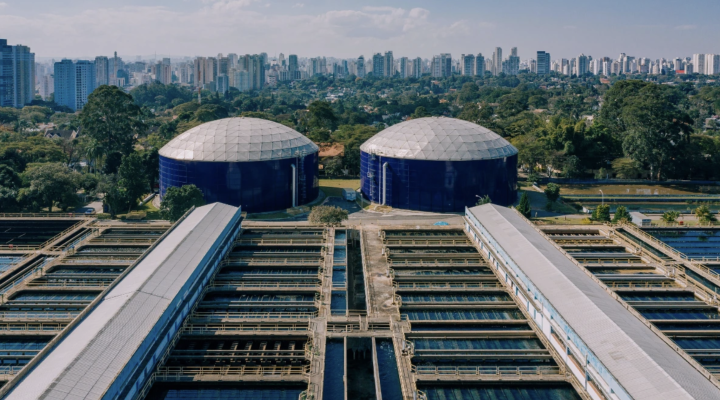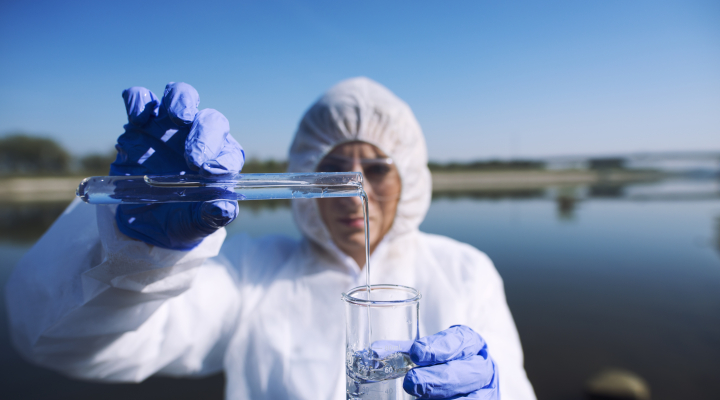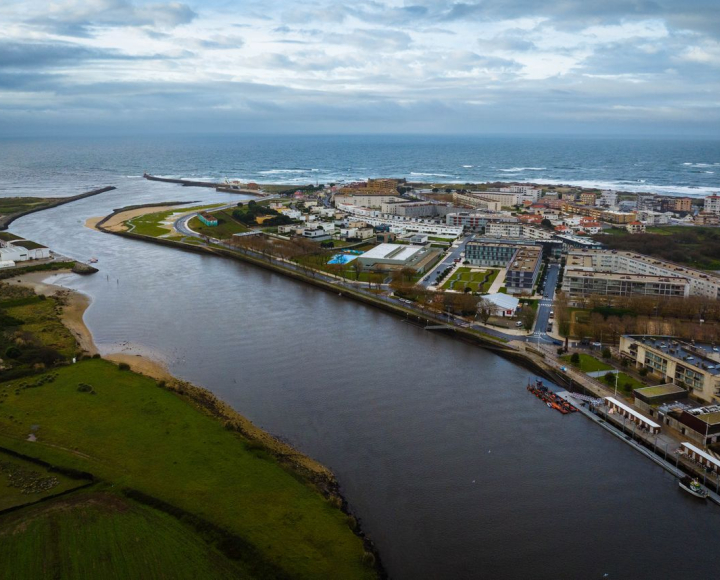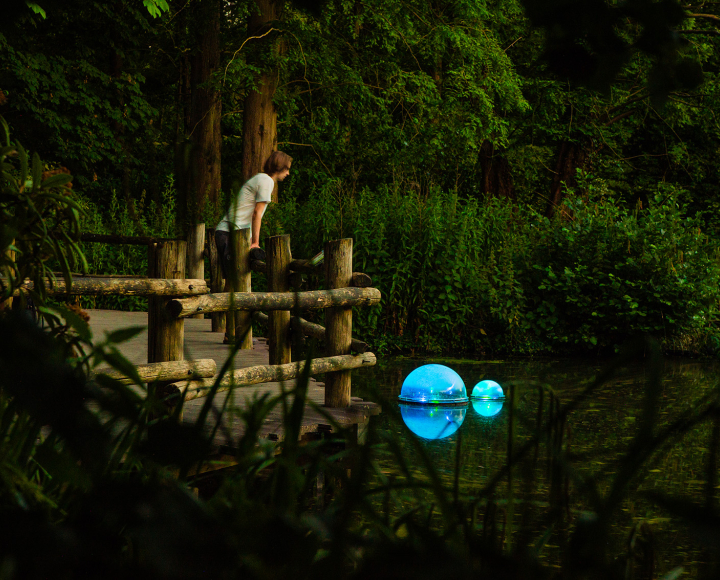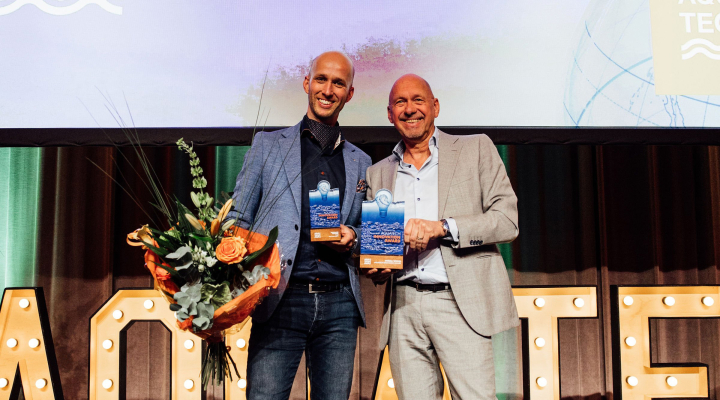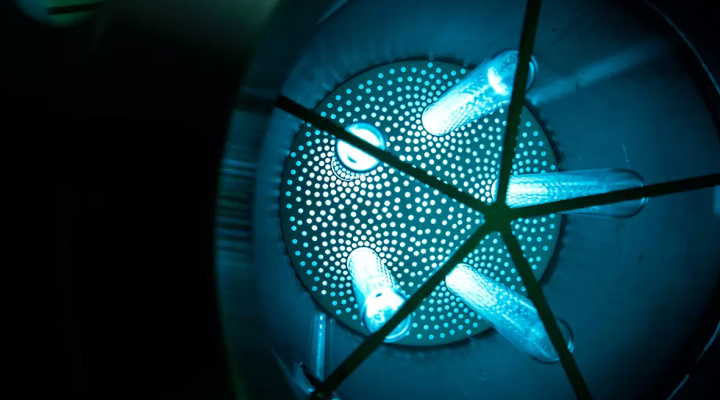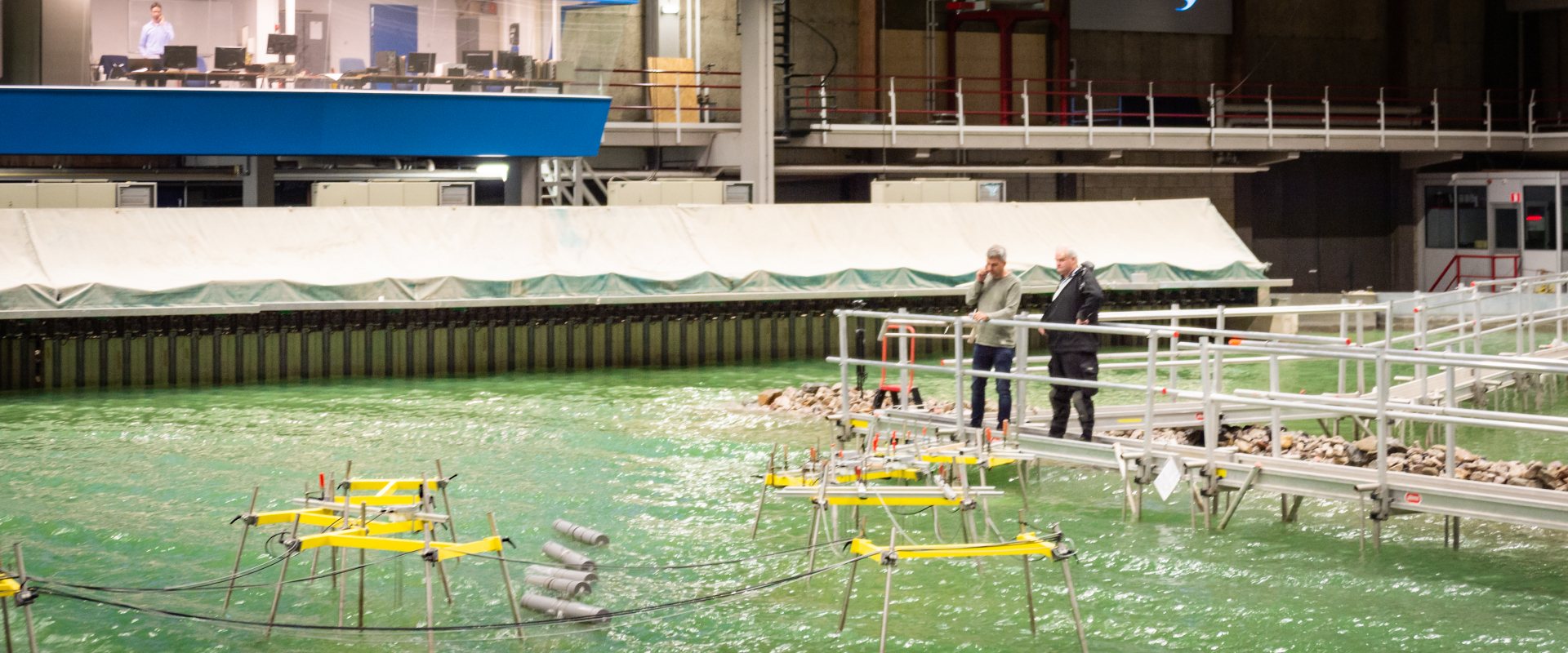
Scale model tests for optimum configuration wave energy park
Research institute Deltares started a series of tests in its Delta Basin to study the best configuration of a wave energy park and the effects of such a park on the coastline. The study preludes on plans for the installation of a Slow Mill prototype in the North Sea, off the Dutch coast.
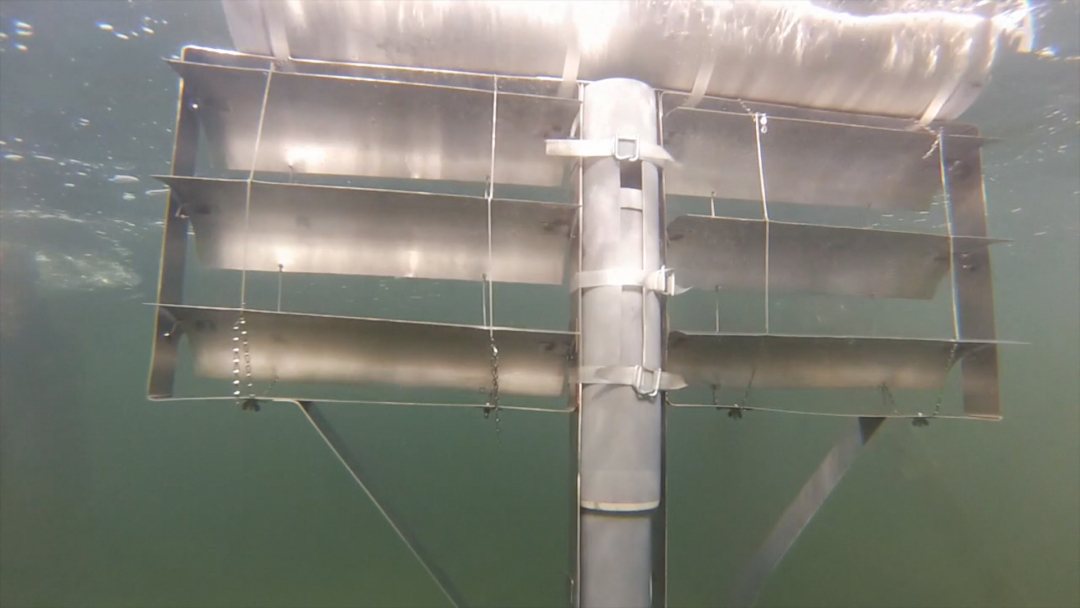

Measuring waves
The tests will be carried out with five 1:24 scale models that will be set up in three different configurations with different wave angles. Wave heights in front of and behind the configuration will be measured for each configuration and wave angle.
The relationship between these two sets of wave heights will provide an indication of the effect of a number of wave energy devices on the wave field. Using the results in a numerical study makes it possible to estimate the possible effects on the coast, such as coastal erosion or beach accretion, associated with the scaling up of the number of wave energy devices.
Huge energy potential
The estimated amount of energy from waves in the North Sea is between 1.5 - 5 TWh a year. In other words, 0.4 1.4 million households a year can be supplied with green electricity from wave power.
Inventor Erwin Croughs invented the Slow Mill to extract energy from waves. Development has now reached the stage that there are plans for the installation of a Slow Mill prototype off the coast of the island of Texel in the Netherlands.
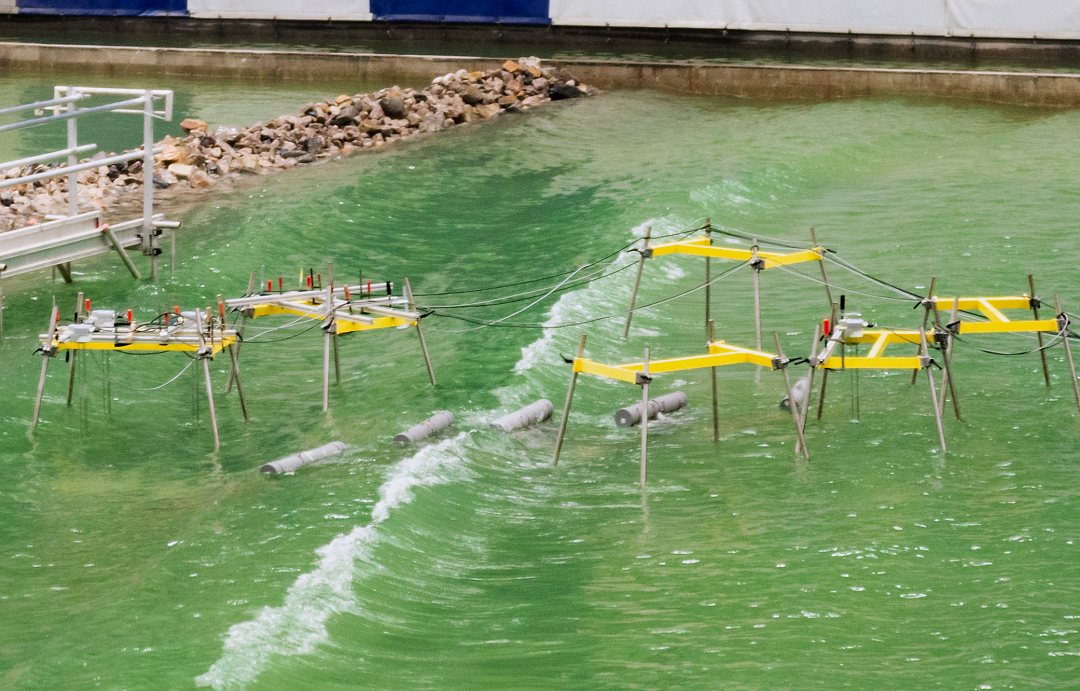

Locations and opportunities
The ultimate aim is to install five or six Slow Mills and create a 'farm'. However, it is not known what the effect of a 'wave energy farm' will have on the wave field and the coast of Texel behind it. As a result, Deltares is now scale-testing different configurations in order to describe the effects.
‘Mapping out the effects on the locality associated with upscaling is important to take wave energy a step further,’ says Jan Kramer, project leader at Deltares.' It is interesting to look beyond the main function of wave energy devices, the ‘harvesting’ of energy from waves.
Optimisation of blades
In addition to the tests in the Delta Basin, tests are also being conducted in the Delta Flume to optimise the blades of the Slow Mill. A 1:8 scale model is used to test the power of the waves delivered to the Slow Mill. The results can be used to optimise the blade profile.
The study is part of the Slow Mill Texel pilot project which is being co-financed by the Wadden Fund. The results of that analysis will be published during the course of next year.




